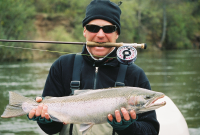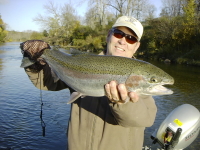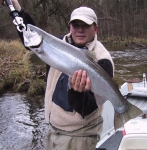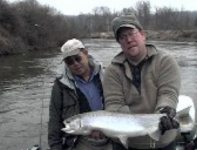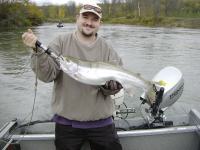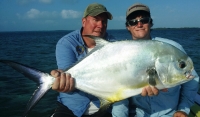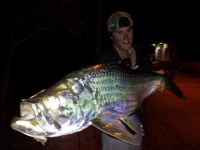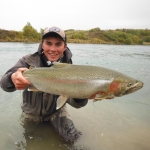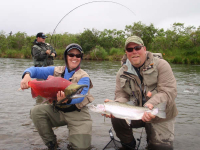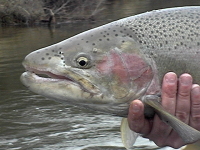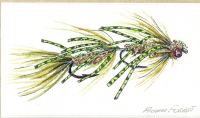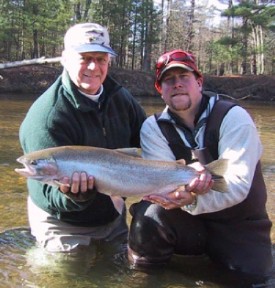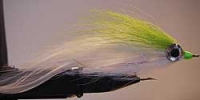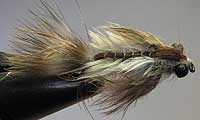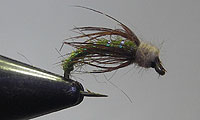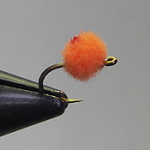|
Jon's Guide Service Fall 2017 Newsletter (September Salmon, October & November Fall Steelhead)
September and October in Michigan provide some of the best fishing opportunities available during the year. Autumn is in the air, and the forests are full of fall color. The local rivers are full of salmon that entered rivers in Late August and early September in the tens of thousands! Fall steelhead have entered the river to feed heavy on the salmon roe buffet from salmon spawning. will be chasing salmon and steelhead until the Michigan winters close the rivers again with snow and ice.
About the Guide I have been a fishing guide in Michigan for over 30 years. Rivers such as the Pere Marquette, Manistee, AuSable and Betsie have been playgrounds and my office for many seasons. FFF certified casting instructor, Orvis endorsed guide and school instructor, Head Guide of the largest outfitter east of the Rocky Mountains, and fly shop owner have built years of experience in fishing & fly fishing Michigan waters and around the world. Join me and explore the great fishery and experience that Michigan rivers have to offer. My guide service is about providing a safe, educational experience that will be remembered for years to come. Our goal is to put you on the best fishing your day has to offer! Jon Kestner (Jon’s Guide Service)
Michigan River and Fishing Reports Steelhead on Streamers!
How to Rig for Trout & Steelhead Drift Fishing / Float Fishing / Swinging Flies Check out this icon for info on knots
(231) 590-3483
© Copyright 2017 Jon's Guide Service |
What flies do I use for Steelhead?
Fishing nymphs or aquatic insect patterns for Steelhead has become very popular in the midwest. There are three (3) groups of importance when looking for patterns to fish for Steelhead: mayflies, stoneflies, and caddis.
Egg patterns are what a good number of Steelhead fishermen use to catch Steelhead, and is one of the best patterns to use for fall Steelhead! Egg patterns imitate the roe or fish eggs of spawning fish in the river system. Eggs, as well as general nymphs and Streamers, can be tied in bright or hot colors, and can be productive for catching Steelhead. These patterns are called attractor patterns. Attractor patterns are good when the water is high and dirty or when fish are in an aggressive mood.
Streamers have been the roots of Steelhead fishing in the northwest portion of the country for years. Streamers may include leeches, baitfish patterns, sculpin, as well as attractors, as mentioned before.
What determines the flies I use for Steelhead?
How do I fish for Steelhead? There are three basic ways to present a fly to a Steelhead. The most common way is to use a technique called chuck-n-duck. This system uses a small diameter fly line (shooting line or running line .020 -.034), a butt section of 8’ or longer and a dropper weight attached to the end of the butt section. From the butt section, weight, tippet, and flies are added. This system runs to the bottom and follows the bottom while presenting the flies. The second technique is to use a floating line. This system works best for fishing shallow water or site fishing. The ability to mend and cast are at a higher level with this technique. Rigging a floating line can be as simple as attaching a tapered leader to the fly line, a fly, and a pinch of weight. The use of a strike indicator can be used to help detect the take. An indicator can also be used to fish a 90 degree presentation or to fish the flies elevated over snags and debris. The use of spey or two-handed rods has helped this technique become popular. The longer fly rod makes casting, mending, and presentation easier on the angler as well as more productive. Another common way of fishing for Steelhead is to swing or strip flies. I find this technique to be more productive in the fall, but have had success in the spring as well. The use of a sinking line will help keep flies down in the strike zone while swinging or stripping flies. The most effective techniques are based more on ease of presentation and how long the fly stays in the strike zone.
Where do I fish for Steelhead? Michigan has many great rivers and streams to fish for Steelhead. Some of my favorite rivers are the Manistee River below Tippy Dam , Pere Marquette River below M-37 bridge (flies only section – Wahalla bridge area) , Muskegon River below Croton Dam - Newaygo , and the Betsie & White River. When choosing a river to fish, ask yourself what you are looking for. Some rivers are easy to wade; others fish better with a boat. Will the river or section of river to be fished be crowded? I try to fish where good numbers of fish can be found but where I am not influenced by others all day long.
Jon's Guide Service books several guides and can provide fishing and guiding services on the Manistee River, Betsie River, Platte River, Pere Marquette River and Muskegon River.
|
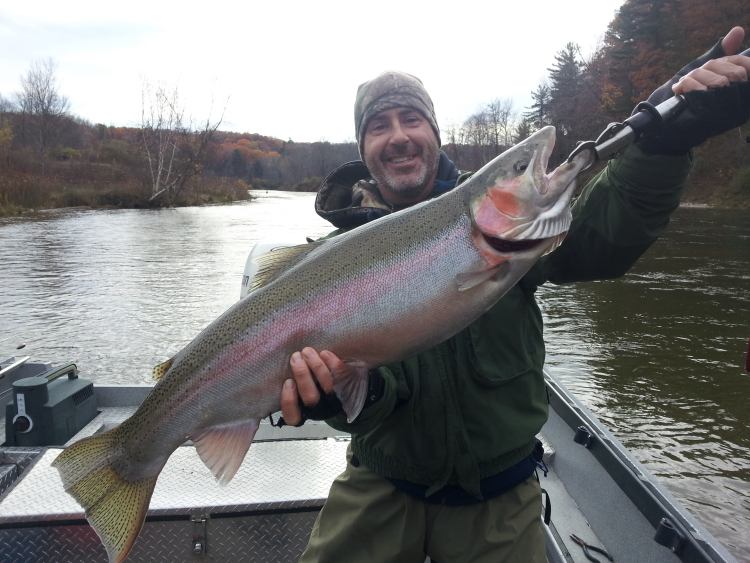
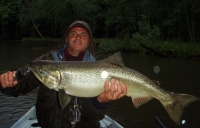
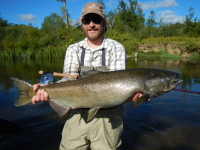
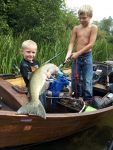
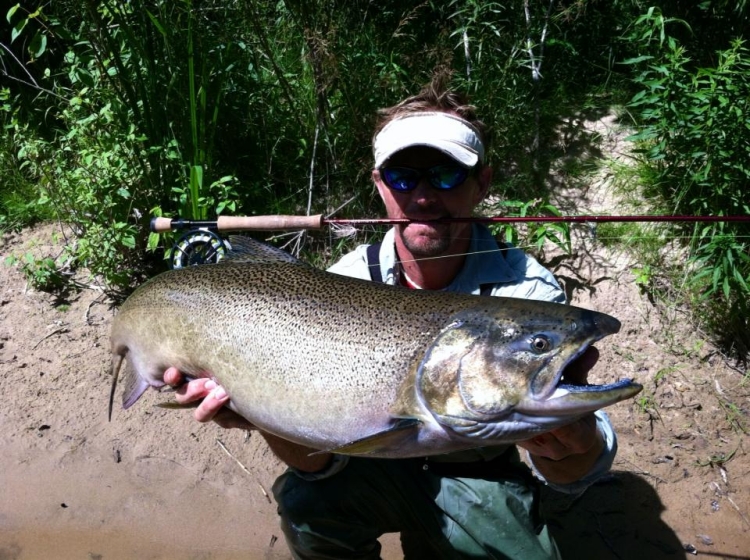
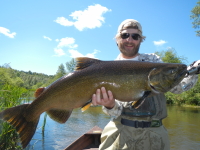
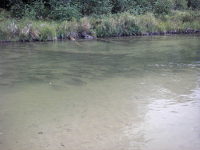
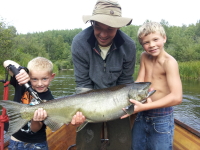
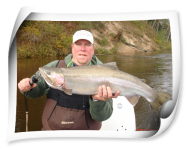
 River Reports, Maps, Guided Fly Fishing in Michigan for the following Species and Rivers:
River Reports, Maps, Guided Fly Fishing in Michigan for the following Species and Rivers: